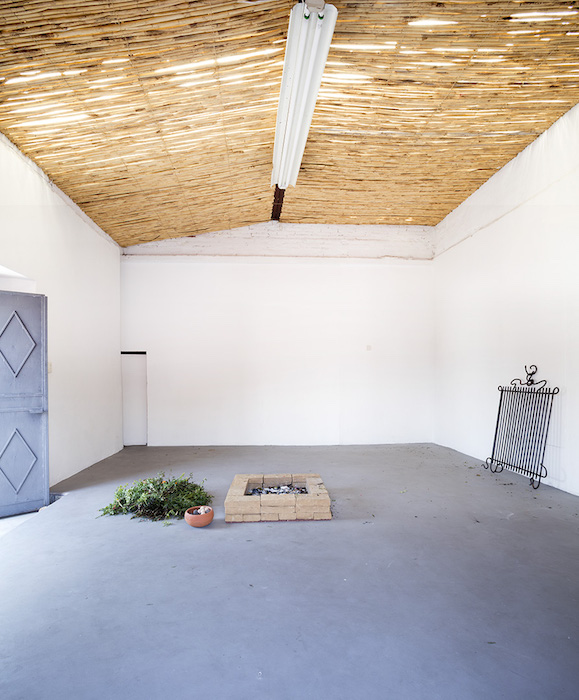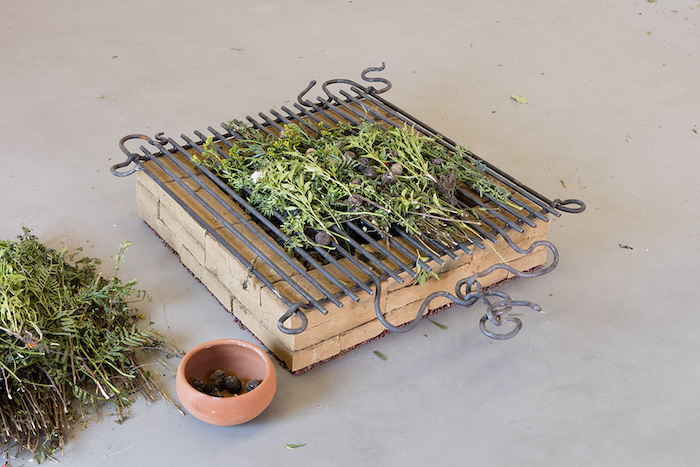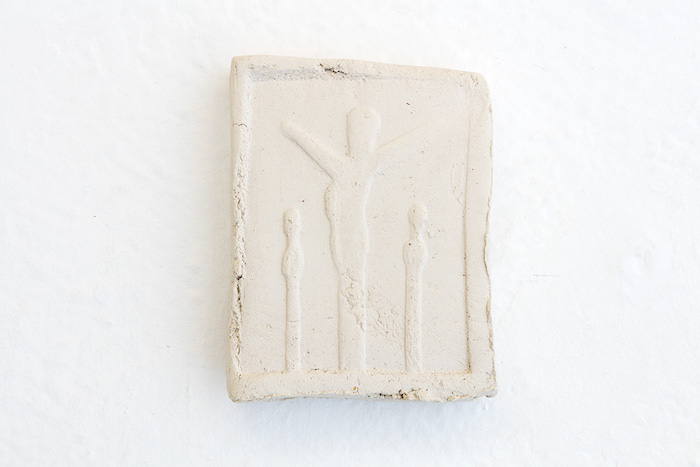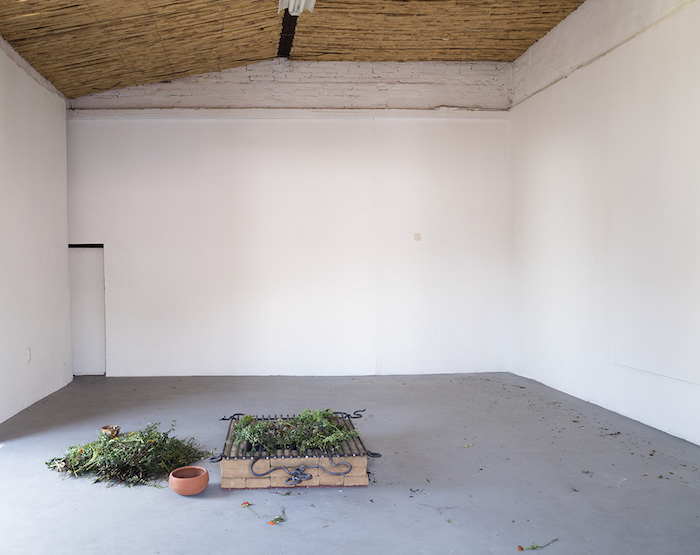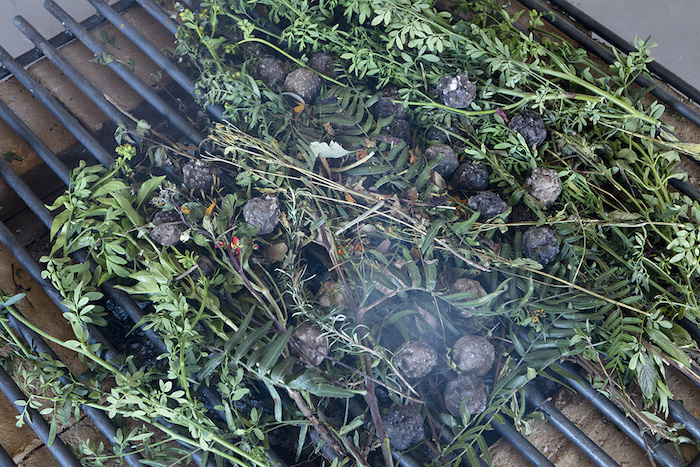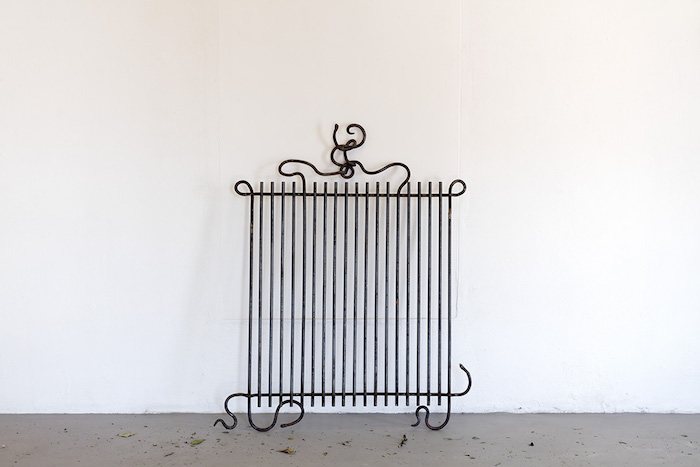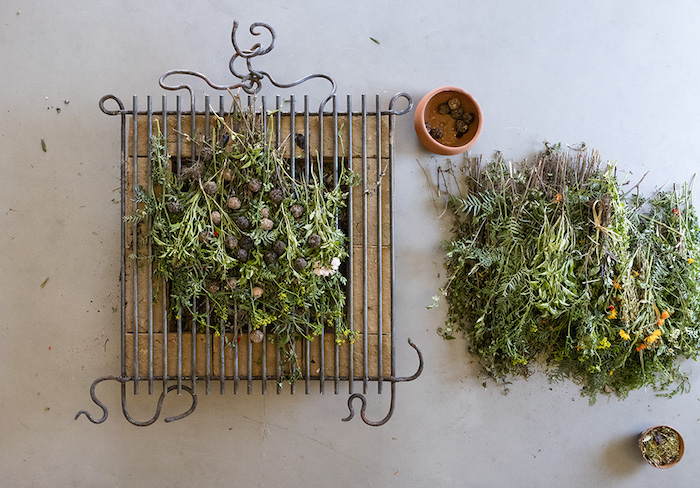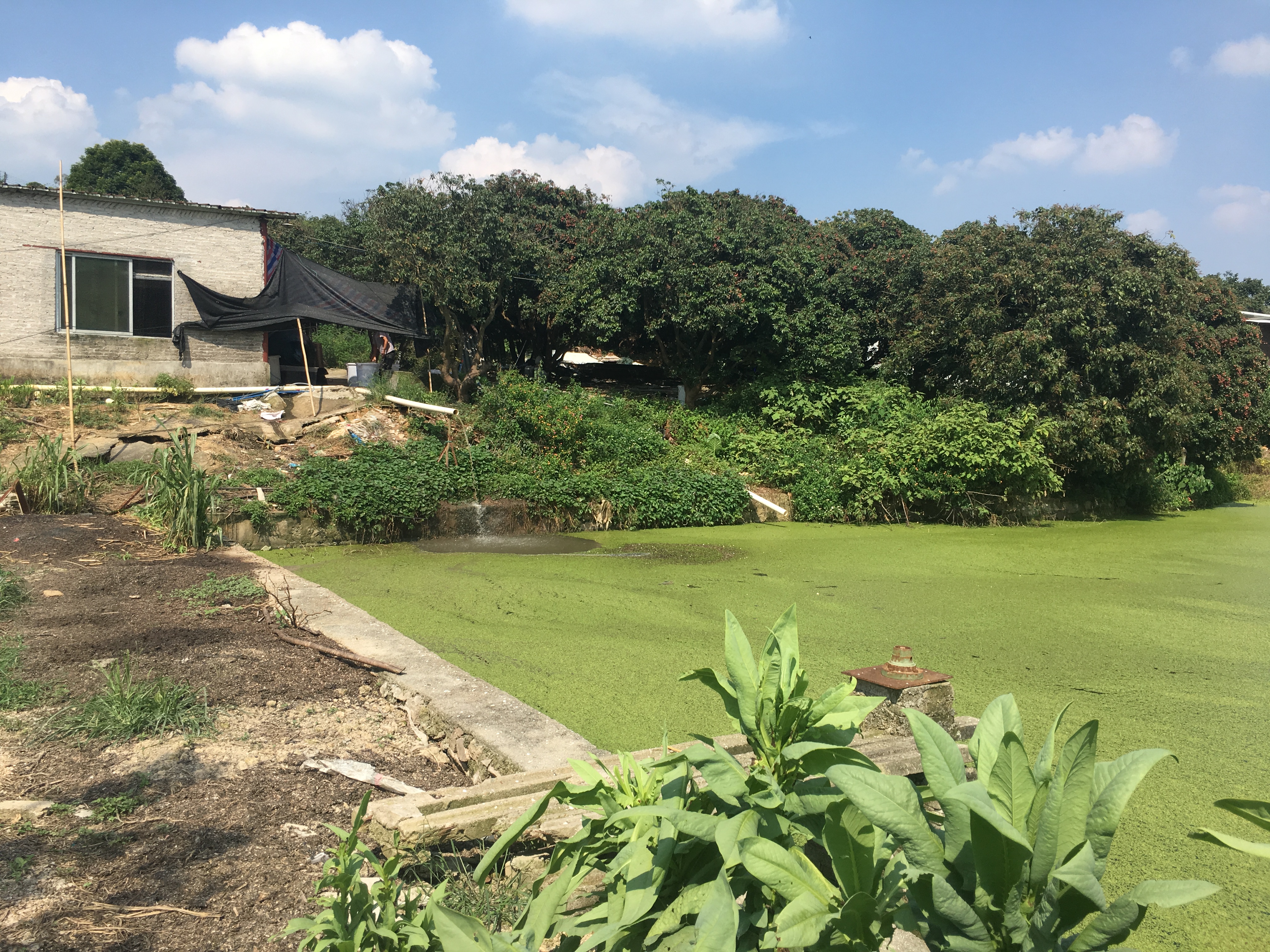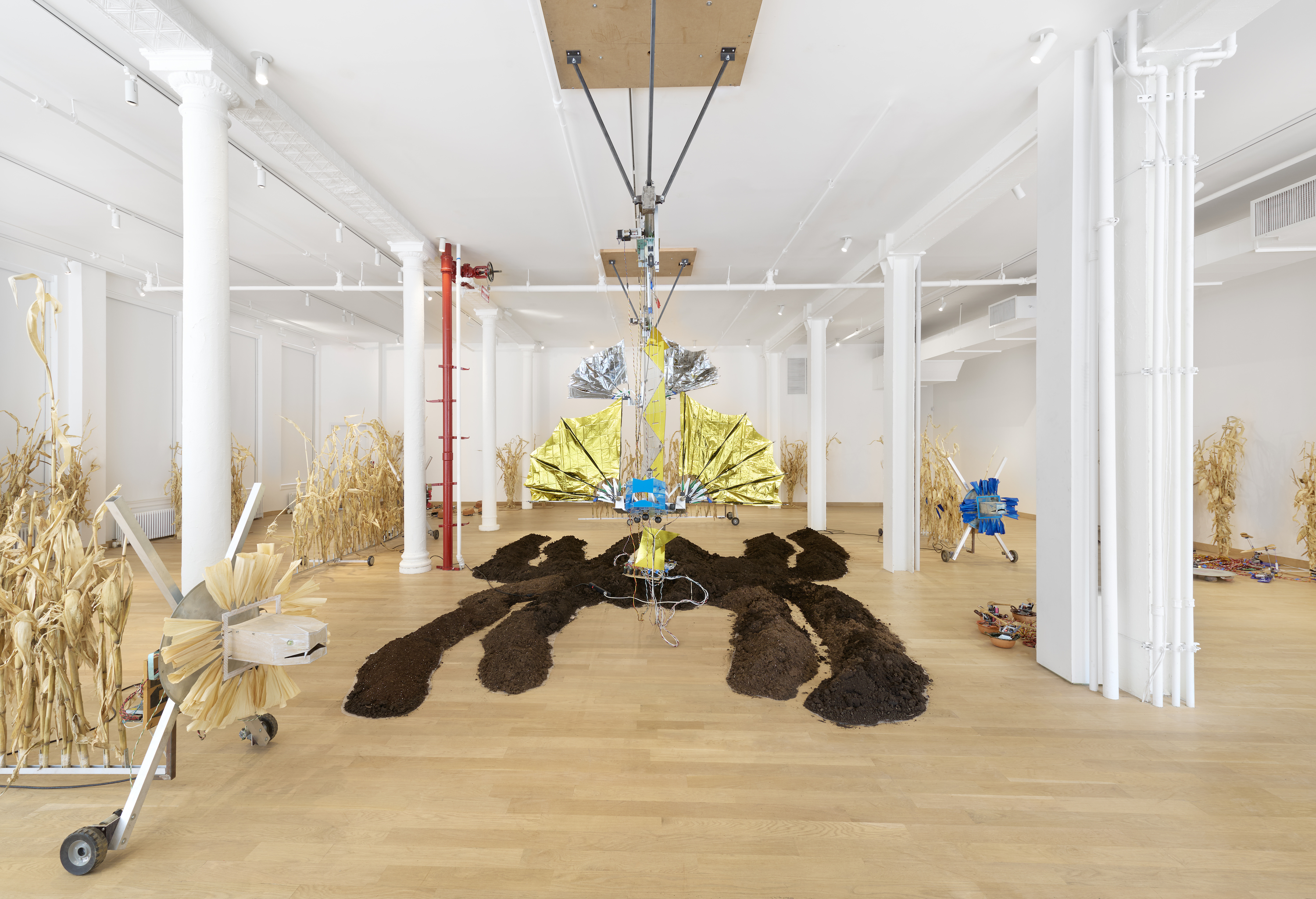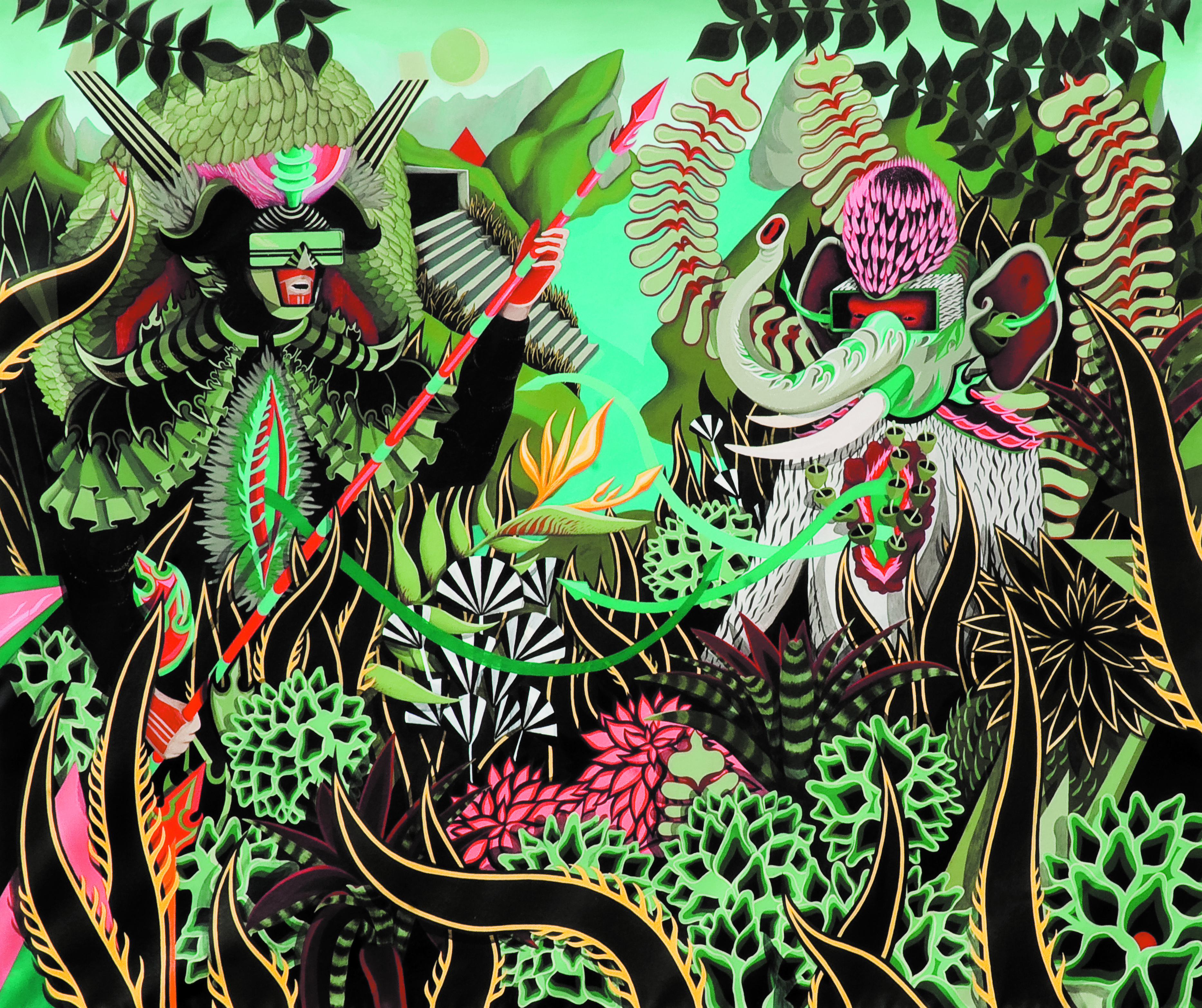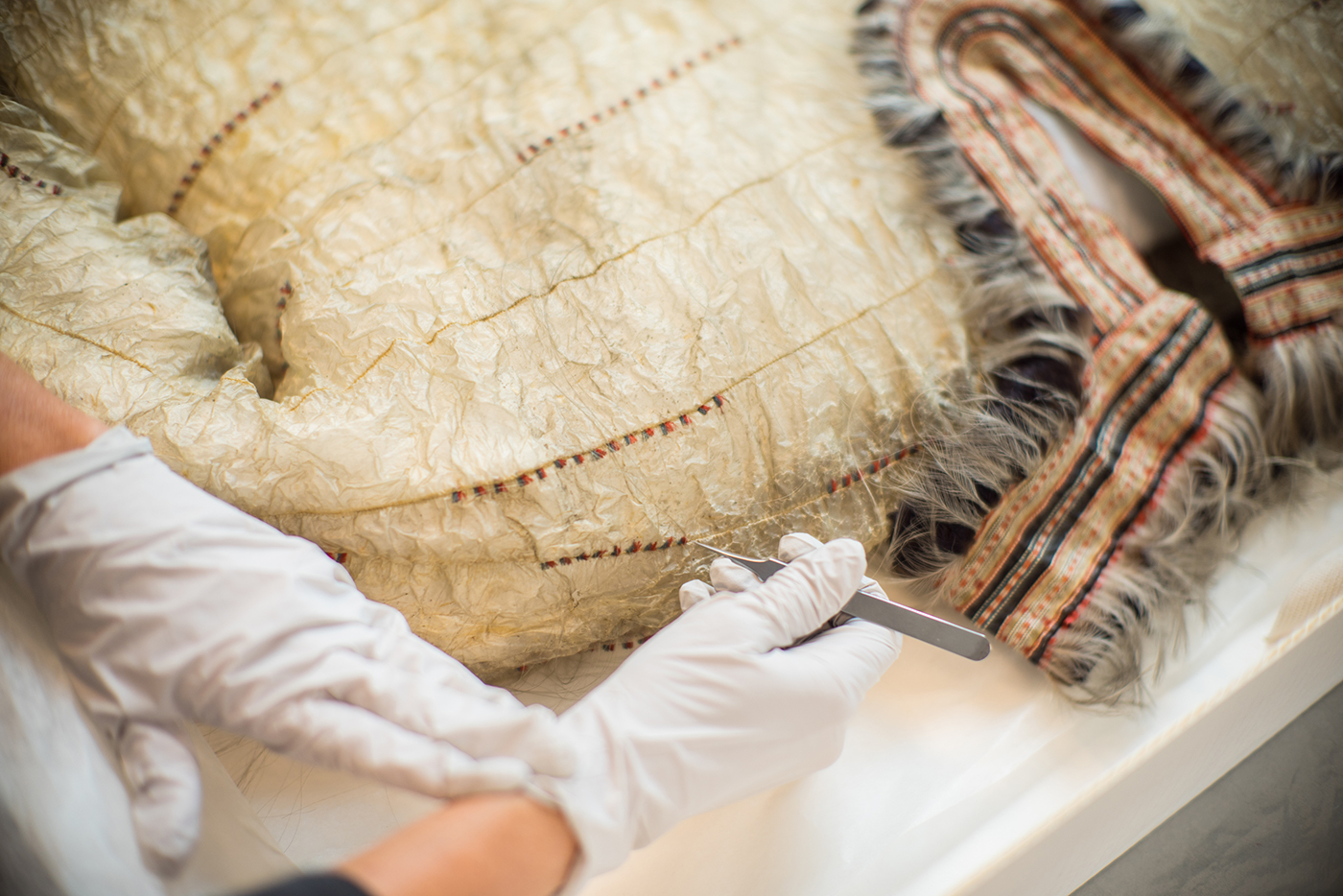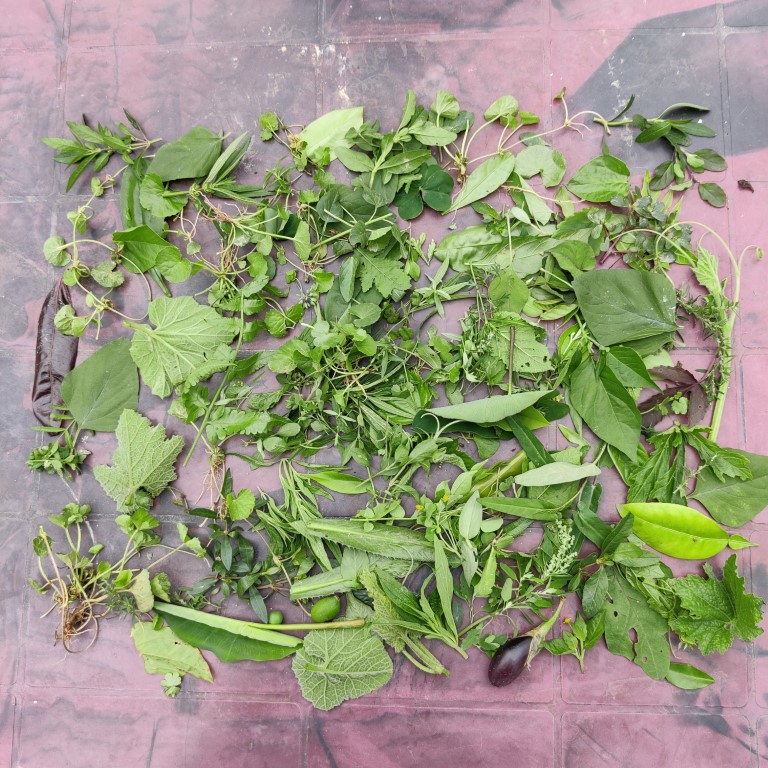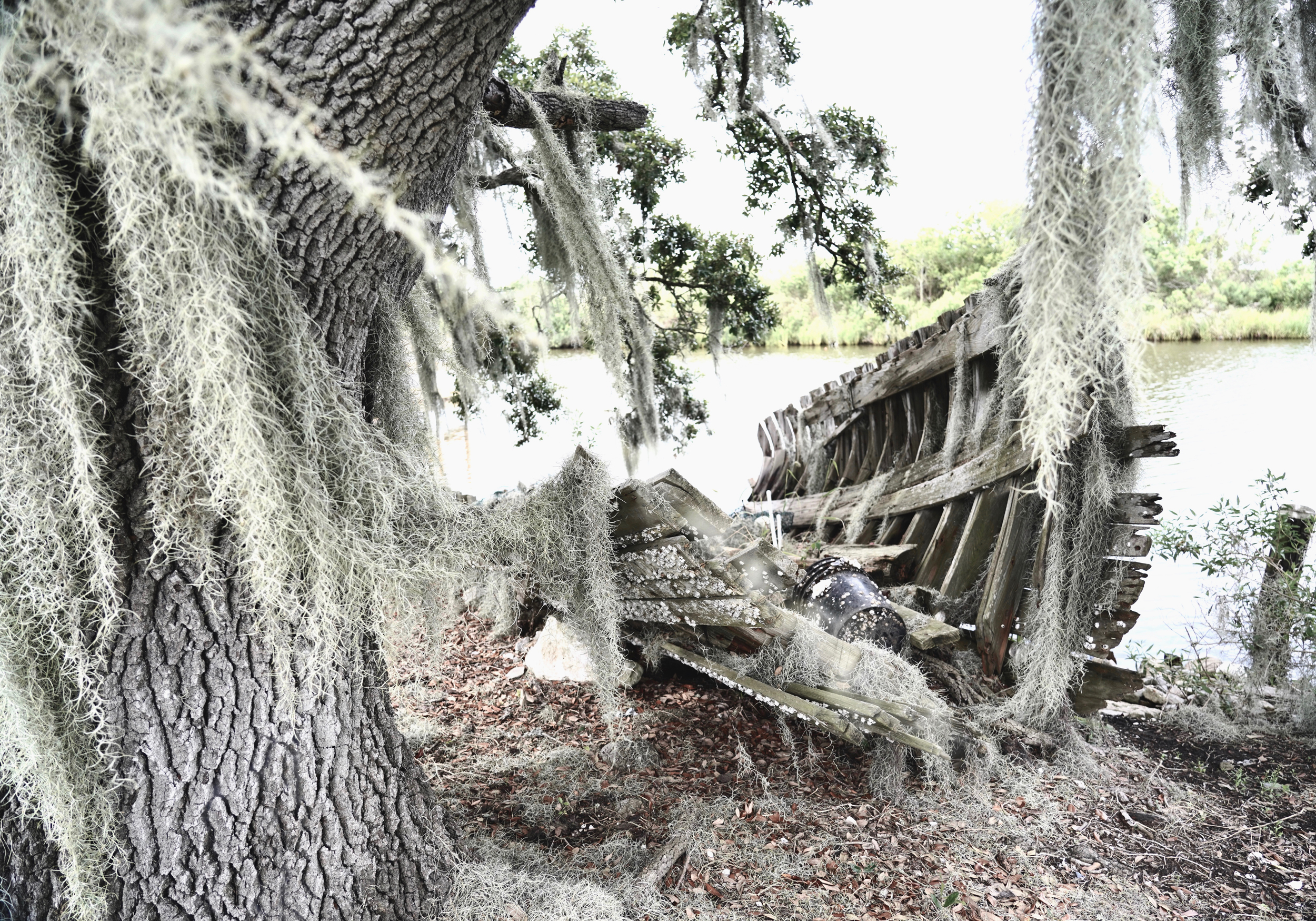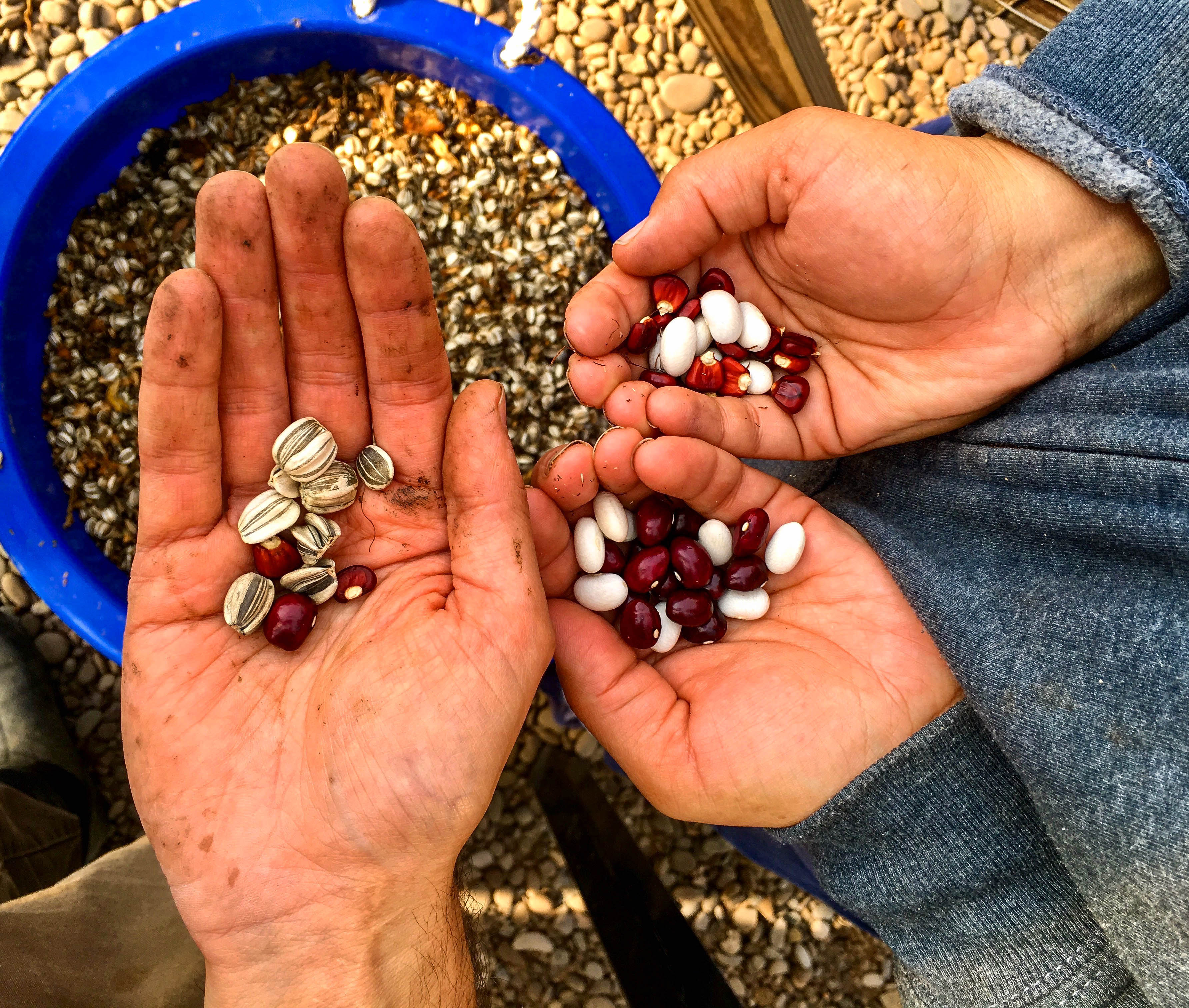At Parallel, Oaxaca, curatorial-artistic-investigative-philosophical team Jennifer Teets and Lorenzo Cirrincione present “Elusive Earths III,” the third iteration of their ongoing ethnographic inquiry into the history of geophagic traditions. The practice of geophagia—earth eating—is adopted by human and nonhuman animals alike and occurs virtually worldwide. Among humans it generally appears in three forms: as cultural practice, as a survival response to famine or poverty, and as a psychological craving for non-nutritional foodstuffs, known as Pica.(1) It pertains to both the origins and the future of medicine, though the scientific properties of bentonite and kaolin clays that support its health-based uses are today most widely adopted by the mass-market beauty and wellness industries. Whether operating within its original contexts and modes of consumption or exported beyond them, the use of earth for medicinal or cosmetic purposes invokes questions about whether the earth provided is authentically sourced and prepared.
Inspired by sixteenth-century reproductions of terra sigillata [sealed earth]—clay pills produced by the ancient Greeks which according to Teets and Cirrincione are “one of the first lineages in pharmacology”—the project seeks to excavate linkages between the human and geological activity in the Anthropocene, including knowledge circuits, authenticity, performativity, and toxicity.
In a conversation at the gallery, Teets and Cirrincione explained that though clay eating is well documented in classical western antiquity, there is little study of it in Latin America, so their research on geophagia in Mexico is heavily dependent on oral histories. “Elusive Earths III” uncovers a series of traditions of earth consumption in Mexico that have been hidden in plain sight and have evaded scholastic inquiry.
The exhibition hones in on two of these traditions: the pan de tierra benedita [blessed earth cakes], or pancecitos [little breads] as they are affectionately called, made by the Antonio Luis family of Tlacolula in the state of Oaxaca; and the grilled antojo de tierra [clay candies], also called chogosta, from Jáltipan in the isthmus of Veracruz. By a twist of fate, in both instances Teets and Cirrincione have secured the last remaining samples of these edible earths.
The Antonio Luis family no longer produces their panecitos as the quarry from which the clay stones to make the breads are sourced is under federal protection due to its proximity to Yagul, a Zapotec archeological site 20 miles from Oaxaca. The family had one remaining bag of the powered clay, which the eldest member of the Antonio Luis family, Doña Juana Antonio Raymundo, used to make a panecito for Teets and Cirrincione’s pharmacological geology archive.
Pedro Martinez, the chogostero who makes the chogosta clay candies, shared his secret recipe for cooking the clay with Teets and Cirrincione. He was motivated to preserve the recipe because his children are uninterested in carrying on the family tradition. Teets and Cirrincione also possess the last remaining edible samples of Jáltipan clay, which Martinez happened to send one day before a petrochemical blast at a Pemex plant contaminated the region, destroying the clay for future consumption.(2)
The only wall-mounted work in the whitewashed adobe gallery is an Antonio Luis family panecito embossed with an image of the crucifixion (Pan de tierra bendita, Tlacolula (Oaxaca), 2016). In the center of the room, the pair has installed what Teets referred to in conversation as “a kind of Hamachi grill” of gravel and unfired Oaxacan adobe bricks, which they used to cook the chogostas (Chogosta, Jáltipan (Veracruz), 2016). The custom grate of the grill features serpentine metalwork, twisting in reference to the Rod of Asclepius and Quetzalcoatl, the feathered serpent Aztec deity. Locally gathered medicinal herbs used to barbecue the clay candies are spread on the ground, lending a smoky, verdant aroma to the gallery reminiscent of a temazcal, a Zapotec ceremonial sauna, in the dusty midday heat. A terracotta bowl presents the cooked clay candies to the public to eat.
Though it is a commonly held belief that traditions of earth consumption are indigenous to Mexico, Teets and Cirrincione assert that the lack of published academic research on the history of Mexican geophagia casts doubt on this notion and maintain that historical provenance and the motivations for the consumption of earth remain unclear. Did it come from European influence, or was it indigenous to the region? Was it medicinal or religious? In Jáltipan is the prepared clay called “candy” because people who lived there simply enjoyed its flavor? Or is this an example of circular logic in which medicinal remedy begets taste and culture?
In comparison to the overall project’s look at the history of human relationships with various earths and geological alimentation, the presentation of “Elusive Earths III” in Oaxaca delves into a specificity of place that reveals tensions and the blurring between the coexisting strata of culture in Mexico: the ongoing presence of indigenous traditions, the history of colonial conquest, and the present day. In researching Mexican traditions of the consumption of pure earth, Teets and Cirrincione remind us to be careful about what we consider indigenous, unpolluted, or authentic. Indigenous culture and histories occupy an important part of Mexican national pride and cultural identity, which crystallizes in the form of the Anthropology Museum in Mexico City, the country’s largest and most visited museum. By reframing as contemporary art traditions of clay consumption that are virtually extinct due to contemporary interventions of the state, either in the form of an industrial accident by the national oil company or archeological protection by the National Institute of Anthropology and History, Teets and Cirrincione highlight the imperative to be vigilant and to question which allegedly indigenous histories and forms of knowledge are being preserved and why.
(1) Alexander Woywodt and Akos Kiss, “Geophagia: the history of earth-eating,” Journal of the Royal Society of Medicine, vol. 95 no. 3 (March 2002): 143-146.
(2) Lizbeth Diaz, “Mexico’s Pemex puts blast death toll at 24, blames leak,” Reuters, April 21, 2016, http://www.reuters.com/article/us-mexico-pemex-idUSKCN0XH2N2.
